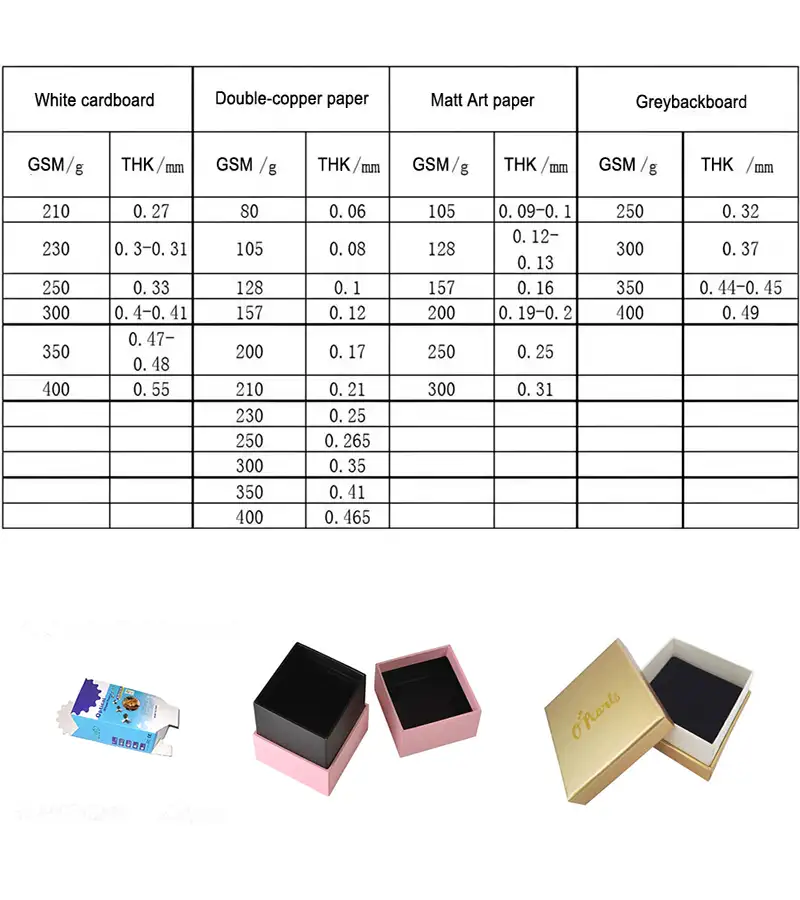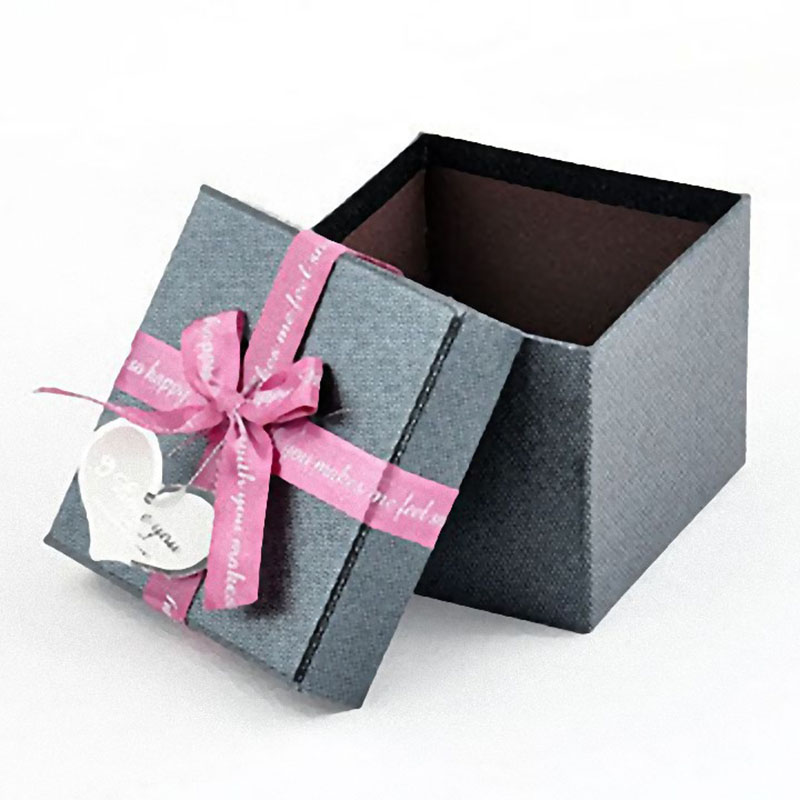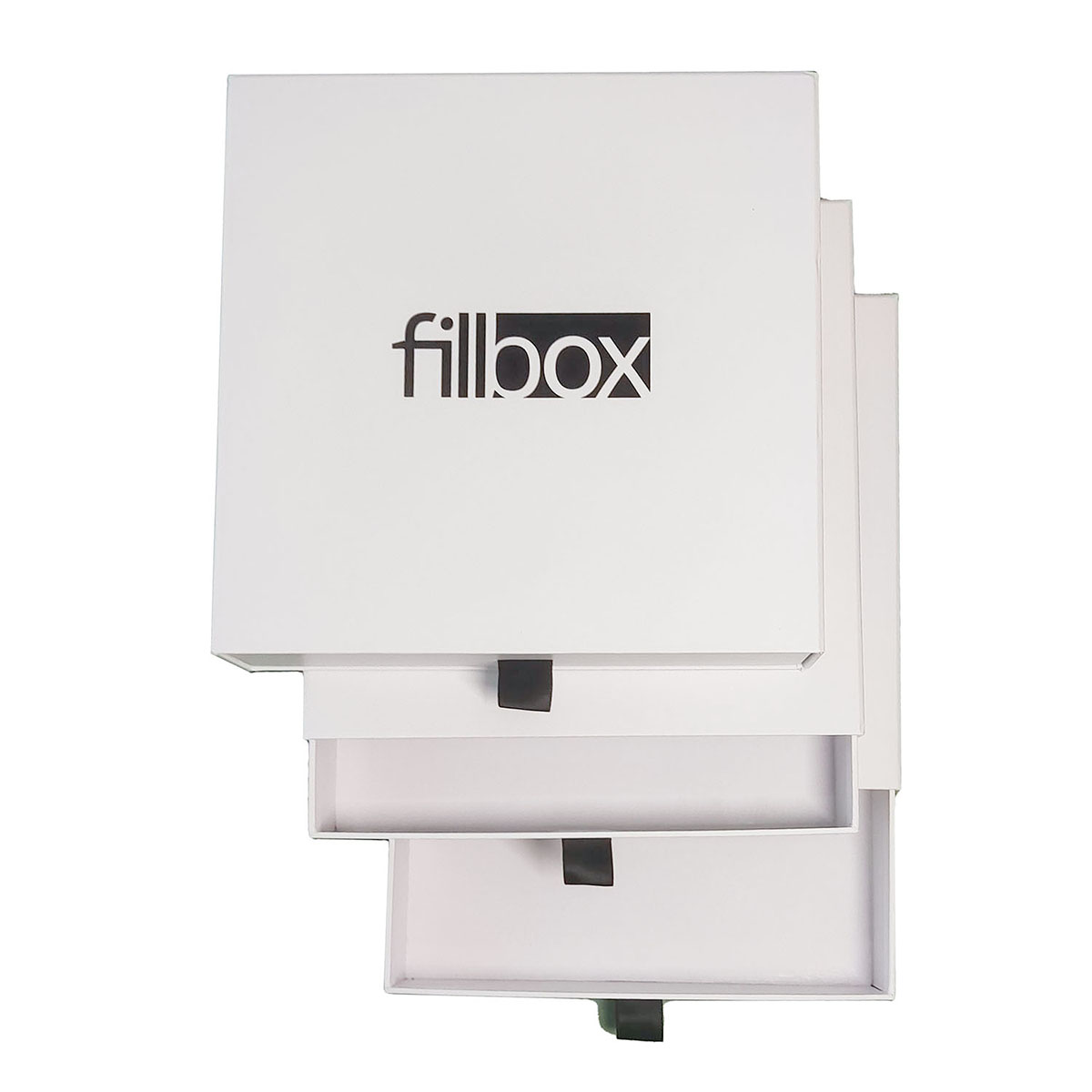Guide to Selecting Paperboard for Printed Packaging Boxes: Decoding Grammage
In the packaging industry, paperboard grammage is like fabric thickness for clothing—it directly affects both the texture and functionality of the box. As packaging technicians, we break down the logic behind grammage selection in a clear, practical way.
Understanding Paperboard Grammage
- Grammage refers to the weight of paper per square meter (g/m²). Common grades include:
- 250g: Suitable for lightweight items (e.g., hang tags, manuals)
- 300g: Versatile choice (e.g., small electronics, cosmetics)
- 350g: Mid-to-premium packaging (e.g., tea gift boxes, wine packaging)
- 400g: Heavy-duty packaging (e.g., mechanical parts, ceramics)
- Quick tip:
“Use 300g for books, 350g for wine, and 400g for heavy goods.”
Six Key Dimensions for Choosing the Right Grammage (Comparison Table)
| Dimension |
300g Paperboard Use Cases |
350g Paperboard Use Cases |
Cost Difference |
| Load Capacity |
≤3kg (cosmetic sets) |
3–8kg (wine gift boxes) |
+18% |
| Printing Techniques |
Standard CMYK printing |
Foil stamping / embossing / UV |
+22% |
| Transportation |
Air freight / express parcel |
Ocean freight / full-container |
+15% |
| Shelf Display |
Fast-moving consumer goods (FMCG) |
Luxury product presentation |
+25% |
| Sustainability |
FSC-certified paperboard |
Recycled board |
-12% |
| Unboxing Experience |
Single-use packaging |
Reusable structure |
+30% |
Industry insight:
UK supermarkets require shelf boxes to rebound under 5mm after standing upright for 30 seconds—this demands ≥350g grammage.
Dynamic Cost-Benefit Modeling of Grammage
1. Cost Formula for Paperboard Grammage
- Total Cost = (Paper Cost × 1.3) + (Shipping Cost × 0.7) + (Damage Loss × 1.5)
- Case Study: Bluetooth Earbuds Packaging
- Option A: 350g C1S board (direct packaging)
- Option B: 300g white back duplex + EPE inner liner
- Result: Option B reduced total cost by 11.7% and improved drop test pass rate by 23%
2. Grammage Optimization for Sea Freight
40HQ Container Test Data:
| Grammage |
Max Load Quantity |
Shipping Cost/Box |
Damage Rate |
| 250g |
12,000 pcs |
$0.80 |
2.1% |
| 300g |
9,500 pcs |
$1.20 |
0.7% |
| 350g |
7,500 pcs |
$1.60 |
0.3% |
Golden Formula Suggestion:
Use 300g board for main structure + reinforced inserts at stress points — this saves 17% on freight while keeping product damage under 1%.
Five Advanced Techniques for Grammage Selection
1. Regional Customization
- Southeast Asia: 280–300g (apply moisture-resistant coating for hot, humid climate)
- Northern Europe: Prioritize 300g recycled board (compliance with EPR regulations)
- Middle East: Use 320g+ laminated paperboard (to resist sand and dust abrasion)
2. Grammage Illusion Techniques
- 280g board + corrugated liner = visual feel of 350g
- Double-lamination: 250g + 120g card = 370g tactile quality
- Edge thickening: Increase grammage selectively at box openings for strength
3. Grammage and Printing Interdependence
- 300g board: Optimal screen ruling at 175 lpi
- 350g board: Foil stamping temperature must be 8–10°C lower
- Dark color printing: Add 20g base weight to prevent show-through
Three Reliable Verification Methods
1. Basic Lab Tests
- Rebound test: Drop box freely from 1m at 45° — deformation <3mm = pass
- Humidity test: Place in chamber (50°C / 90% RH) for 24h — observe warping
- Load simulation: Apply standard weight for 8h — bottom dent ≤2mm
2. User Experience Indicators
- Opening force: Ideal range 3–5N (test with spring scale)
- Durability test: Open/close 50 times without edge breakage
- Noise index: Box lid closing sound ≤65 dB
Common Misconceptions to Avoid
- Myth: Higher grammage is always better
- Truth: A 400g box for lipstick feels bulky and hinders unboxing.
- Myth: Domestic and international standards are the same
- Tip: Use recycled board for EU markets, while the US prefers high-whiteness paper.
- Myth: Uniform grammage across the box
- Smart move: Use 50g lighter board for the lid — lowers cost and improves usability.
Conclusion
“From basic grammage matching to intelligent packaging strategies, paperboard selection is no longer just a material choice.
When grammage precision aligns with cost control, regulatory compliance, and user experience, packaging evolves into a strategic asset rather than a simple container.
Mastering this ‘grammage-based decision system’ is the key to unlocking high-end global markets.”




 We like to do design according to all the customers' requirements, or offer them our new designs. With strong OEM/ODM capabilities, we can fill your sourcing demands.
We like to do design according to all the customers' requirements, or offer them our new designs. With strong OEM/ODM capabilities, we can fill your sourcing demands.